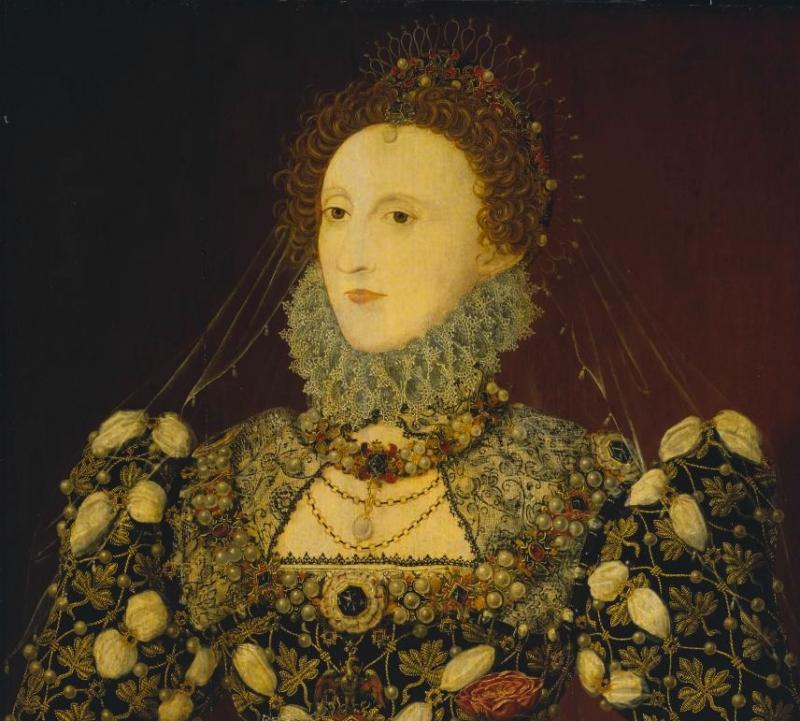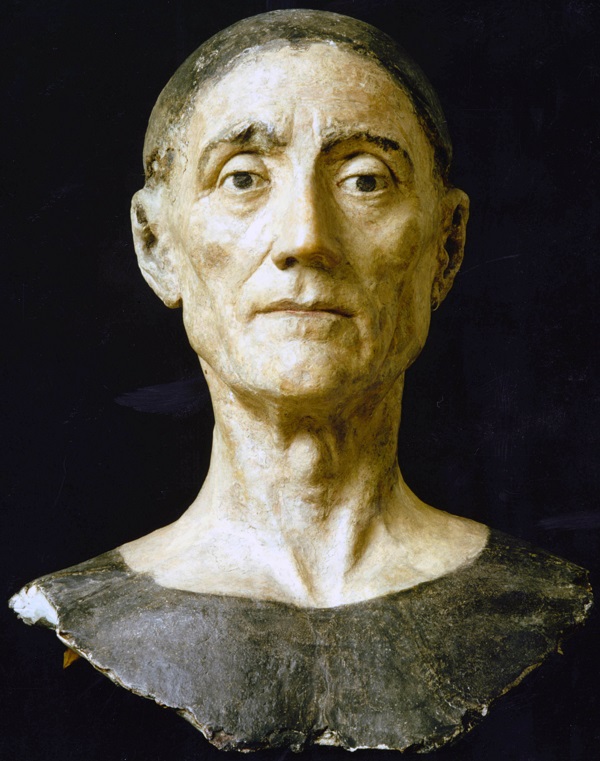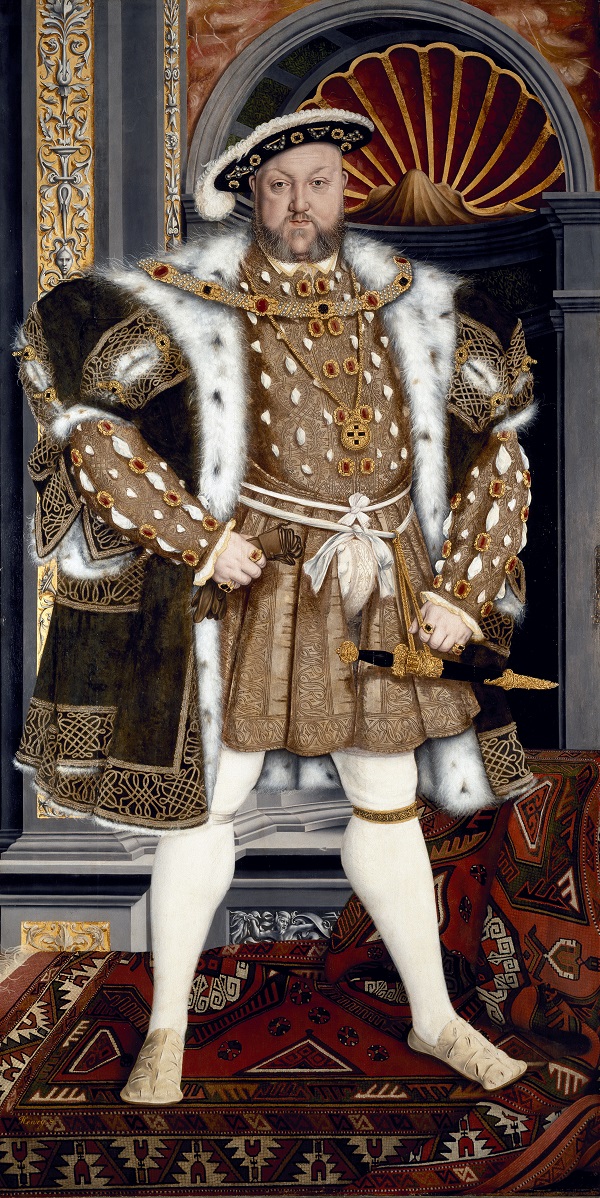The Real Tudors, National Portrait Gallery | reviews, news & interviews
The Real Tudors, National Portrait Gallery
The Real Tudors, National Portrait Gallery
A modest but groundbreaking display brings together portraits of a great dynasty

For all the political hurly burly, social change and religious upheaval of the Tudor period and the intriguing personal histories of its monarchs, it is surely the portraits of Henry VIII and Elizabeth I that have done most to secure the Tudors in popular imagination.
Far from the simpering pink princesses so beloved of little girls now, Elizabeth's image remains compelling because it achieves a feat unusual even in today’s liberated society, combining beauty and glamour with the hard edge of unassailable power. As Britain’s first female ruler, Elizabeth’s gender was a problem to be overcome, and her portraits trace the development of her image from demure princess to Virgin Queen. While her image remains within the traditional parameters of womanhood – elegant, sumptuously dressed and exhibiting a cool sort of beauty – her portraits suppress her sexuality entirely. By transcending gender she was able to assert her absolute authority and her divine right to rule.
 Surviving likenesses of the Virgin Queen are so sophisticated that it's easy to forget that painted portraiture, in the form we have come to know it, was in its infancy at the beginning of the Tudor period. One of the more remarkable objects here is the surviving head of Henry VII’s funeral effigy (pictured right: attributed to Pietro Torrigiano, 1509). Made using a death mask it is breathtakingly, eerily naturalistic.
Surviving likenesses of the Virgin Queen are so sophisticated that it's easy to forget that painted portraiture, in the form we have come to know it, was in its infancy at the beginning of the Tudor period. One of the more remarkable objects here is the surviving head of Henry VII’s funeral effigy (pictured right: attributed to Pietro Torrigiano, 1509). Made using a death mask it is breathtakingly, eerily naturalistic.
While such an individualistic portrait was novel in 1509, as an object the head is utterly medieval, continuing a tradition of representing the king in sculpted form, and often in the context of funerary monuments. Despite this, Henry VII was quick to recognise the possibilities offered by oil painting to shore up his somewhat flimsy hold on the crown and his painted portrait is the earliest in the NPG's collection.
The notion of political unrest providing the stimulus for the production of portraits is a recurring one in the display, which is the result of a long-running NPG research project. Bringing together multiple portraits of the Tudor monarchs and combining technical analysis with art historical research, the curators have produced a wealth of evidence about techniques, workshop practices and the composition of individual paintings, evoking a buoyant art market doing a brisk trade in royal portraits. In dangerous and uncertain times, displaying a portrait of the king must have seemed a sensible precaution, and the political turmoil caused by Henry VIII’s break with Rome seems likely to have fuelled the growing appetite for his image.
 The definitive image of Henry VIII, even within his own lifetime, derives from a full-length portrait by Holbein. It was originally part of a wall painting, now destroyed, but it was copied endlessly, including by Holbein's own studio. (Pictured left: Henry VIII, Studio of Hans Holbein the Younger, 1540-1550) This image has so thoroughly eclipsed all others that there is something quite shocking about seeing no fewer than six different portraits of Henry, through which can be traced not only the development of Henry’s individual image but the pictorial language of kingship.
The definitive image of Henry VIII, even within his own lifetime, derives from a full-length portrait by Holbein. It was originally part of a wall painting, now destroyed, but it was copied endlessly, including by Holbein's own studio. (Pictured left: Henry VIII, Studio of Hans Holbein the Younger, 1540-1550) This image has so thoroughly eclipsed all others that there is something quite shocking about seeing no fewer than six different portraits of Henry, through which can be traced not only the development of Henry’s individual image but the pictorial language of kingship.
The development of a visual lexicon of kingship is essential to a portrait of the boy-king Edward VI, by an unknown English artist, c.1547, which speaks of the anxiety felt by his advisors as he took the throne. His stance is instantly recognisable as that of his father, Henry VIII, and the portrait uses the trappings of kingship – the throne and gold backdrop – to bulk out his small frame. A further attempt to make Edward appear a more credible monarch is revealed in the underdrawings, which show that the king’s feet had at one point been placed much further apart before being redrawn in a position more appropriate for a nine-year-old boy.
It is estimated that 60% of artistic output from the Tudor period has been lost, and until now, comparatively little has been known about artistic practice in 16th-century Britain, but this modest and rather unassuming display represents an enormous achievement of scholarship, adding considerably to the sum of knowledge on this topic.
Some puzzles will remain however, and the struggle to know more about the many low-status, anonymous painters working in this country is nowhere more evident than in the anamorphic portrait of Edward VI, a poignant entertainment for a little boy and one of the most celebrated paintings of its time, inscribed simply, and enigmatically ‘William painted it’.
Explore topics
Share this article
The future of Arts Journalism
You can stop theartsdesk.com closing!
We urgently need financing to survive. Our fundraising drive has thus far raised £49,000 but we need to reach £100,000 or we will be forced to close. Please contribute here: https://gofund.me/c3f6033d
And if you can forward this information to anyone who might assist, we’d be grateful.

Subscribe to theartsdesk.com
Thank you for continuing to read our work on theartsdesk.com. For unlimited access to every article in its entirety, including our archive of more than 15,000 pieces, we're asking for £5 per month or £40 per year. We feel it's a very good deal, and hope you do too.
To take a subscription now simply click here.
And if you're looking for that extra gift for a friend or family member, why not treat them to a theartsdesk.com gift subscription?
more Visual arts
 'We are bowled over!' Thank you for your messages of love and support
Much-appreciated words of commendation from readers and the cultural community
'We are bowled over!' Thank you for your messages of love and support
Much-appreciated words of commendation from readers and the cultural community
 Folkestone Triennial 2025 - landscape, seascape, art lovers' escape
Locally rooted festival brings home many but not all global concerns
Folkestone Triennial 2025 - landscape, seascape, art lovers' escape
Locally rooted festival brings home many but not all global concerns
 Sir Brian Clarke (1953-2025) - a personal tribute
Remembering an artist with a gift for the transcendent
Sir Brian Clarke (1953-2025) - a personal tribute
Remembering an artist with a gift for the transcendent
 Emily Kam Kngwarray, Tate Modern review - glimpses of another world
Pictures that are an affirmation of belonging
Emily Kam Kngwarray, Tate Modern review - glimpses of another world
Pictures that are an affirmation of belonging
 Kiefer / Van Gogh, Royal Academy review - a pairing of opposites
Small scale intensity meets large scale melodrama
Kiefer / Van Gogh, Royal Academy review - a pairing of opposites
Small scale intensity meets large scale melodrama
 Jenny Saville: The Anatomy of Painting, National Portrait Gallery review - a protégé losing her way
A brilliant painter in search of a worthwhile subject
Jenny Saville: The Anatomy of Painting, National Portrait Gallery review - a protégé losing her way
A brilliant painter in search of a worthwhile subject
 Abstract Erotic, Courtauld Gallery review - sculpture that is sensuous, funny and subversive
Testing the boundaries of good taste, and winning
Abstract Erotic, Courtauld Gallery review - sculpture that is sensuous, funny and subversive
Testing the boundaries of good taste, and winning
 Edward Burra, Tate Britain review - watercolour made mainstream
Social satire with a nasty bite
Edward Burra, Tate Britain review - watercolour made mainstream
Social satire with a nasty bite
 Ithell Colquhoun, Tate Britain review - revelations of a weird and wonderful world
Emanations from the unconscious
Ithell Colquhoun, Tate Britain review - revelations of a weird and wonderful world
Emanations from the unconscious
 Rachel Jones: Gated Canyons, Dulwich Picture Gallery review - teeth with a real bite
Mouths have never looked so good
Rachel Jones: Gated Canyons, Dulwich Picture Gallery review - teeth with a real bite
Mouths have never looked so good
 Yoshitomo Nara, Hayward Gallery review - sickeningly cute kids
How to make millions out of kitsch
Yoshitomo Nara, Hayward Gallery review - sickeningly cute kids
How to make millions out of kitsch
 Hamad Butt: Apprehensions, Whitechapel Gallery review - cool, calm and potentially lethal
The YBA who didn’t have time to become a household name
Hamad Butt: Apprehensions, Whitechapel Gallery review - cool, calm and potentially lethal
The YBA who didn’t have time to become a household name

Add comment